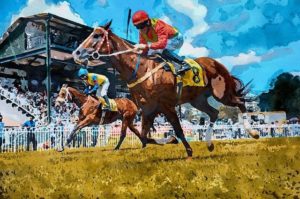Did Steve Cauthen ever win the 2,000 Guineas?
 The simple answer is yes, he did, at the first time of asking. Fresh from becoming the youngest jockey in history to win the US Triple Crown, on Affirmed, in 1978, Cauthen made his eagerly-awaited British debut at Salisbury on April 7, 1979. His first ride on British soil, Marquee Universal, trained by Barry Hills, was a winning one and, less than a month later, he had partnered Tap On Wood, again for Hills, to a half-length victory over hot favourite Kris in the 2,000 Guineas at Newmarket.
The simple answer is yes, he did, at the first time of asking. Fresh from becoming the youngest jockey in history to win the US Triple Crown, on Affirmed, in 1978, Cauthen made his eagerly-awaited British debut at Salisbury on April 7, 1979. His first ride on British soil, Marquee Universal, trained by Barry Hills, was a winning one and, less than a month later, he had partnered Tap On Wood, again for Hills, to a half-length victory over hot favourite Kris in the 2,000 Guineas at Newmarket.
It would be a few years until ‘The Kid’, as Cauthen was affectionately known, won another British Classic, but when he did, like London buses, four came along together. In 1985, by which time he was stable jockey to the late Sir Henry Cecil, Cauthen famously completed the ‘Fillies’ Triple Crown’ – that is, the 1,000 Guineas, Oaks and St. Leger – on Oh So Sharp and won the Derby on Slip Anchor, for the same trainer. He would also win the Derby and the St. Leger again in 1987 on Reference Point, also trained by Cecil, and finished his career with a total of ten British Classic winners.